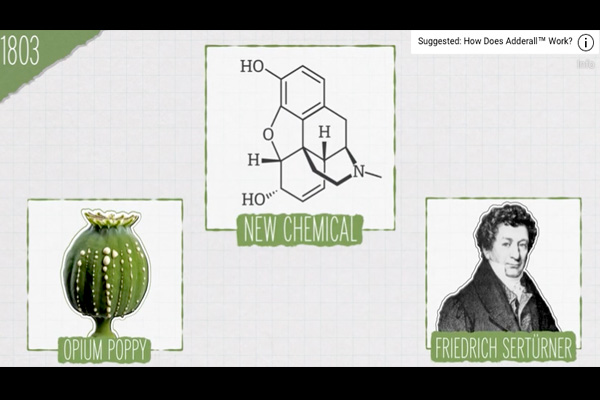WATCH – ANYTHING IS POSSIBLE –
May 16, 2021 – As it turned out, Sertürner got addicted while doing the research.
And although he sounded the alarm, people didn’t listen. Within a couple of decades morphine was being mass produced by a major German pharmaceutical company. And it quickly became clear that Sertürner’s theory was wrong. People could be just as addicted to morphine.
So what did they do about it? Make heroin.
No, seriously. They made heroin.
Heroin was also really effective at treating pain, but at an even lower dose. So again, scientists reasons that not needing as much of it would make it a less addictive opioid.
In fact, in the early 1900s, a religious organization in the United States supplied free samples of heroin through the mail to try to wean people off of morphine.
Here’s your heroin, sir.
That did not work either.
Fast-forward about a century later and scientists have created opioids like Oxycontin, which again was supposed to be less addictive.
You’re probably seeing a trend here. Throughout history we’ve been trying to get the same painkiller benefits that opioids give us without creating a new addictive drug. But what happened is that we’ve just created more types of opioids that people are getting addicted to.
So why are opioids so addictive? And if we know they’re this addictive and that people are overdosing on them, why are they still being prescribed?
Well, they’re incredible painkillers. And a lot of people rely on them to deal with chronic pain from an injury or surgery or even cancer.



